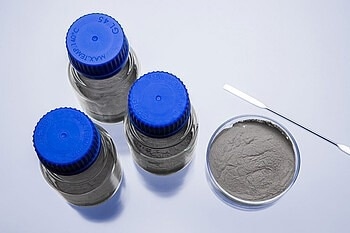The Battery Experts video series from Anton Paar explores essential material characterization techniques in the R&D and manufacturing of lithium-ion batteries. This video gives an overview of physical properties of materials and their accurate measurement, which is crucial for optimizing battery energy density, cycle life, safety, and performance.
A battery’s performance, safety, and longevity are only as good as the materials used to make it. Specifically, the electrodes, separators, and electrolytes must be adequately characterized and monitored from the moment they enter the manufacturing plant until they are integrated into the finished product.
The following parameters must be measured: raw material surface area, particle and crystallite size, crystal structure, pore size, chemical purity, electrode slurry flow, and curing properties, separator pore size and mechanical properties, electrolyte density, viscosity, and flash point.
Talk Batteries the Anton Paar Way
Battery Experts with Anton Paar discusses the most popular characterization techniques used in the R&D and production of lithium-ion batteries. In this video series, an Anton Paar batteries specialist will discuss various concepts related to the physical characterization of battery materials during production.
Solid Electrode Material

Image Credit: Anton Paar GmbH
Lithium-ion batteries' electrodes (cathodes and anodes) play an important role in the transfer of ions, making them critical for efficient energy transfer. These electrodes are made of compacted particulate materials.
Both the chemical composition and the physical properties of these materials will significantly impact the battery’s performance, longevity, and safety, guiding design optimization of the battery for its desired application.
The physical parameters of the electrode material, such as the surface area, crystallite size and shape, particle size, and pore size, directly impact the charge exchange inside a single cell.
Other physical properties, such as solid and skeletal densities, crystal structure, and zeta potential of electrode material particles, play an important role in the battery’s internal conductivity.
The battery's durability will be determined not only by the quality of the electrode coating but also by its adhesion to the electrode. This can be effectively tested via quantitative scratch testing.
Testing for heavy metal contamination is another crucial step in developing electrode materials. The first sample preparation step for heavy metal evaluation is microwave acid digestion.
Properties of electrode materials may also be characterized in operando in full battery assemblies using methods such as XRD or SAXS to monitor changes during the charging and discharging cycle.
Electrode Slurries

Image Credit: Anton Paar GmbH
One of the most important aspects of battery performance is the proper design and development of the mixing and coating processes of the anode and cathode slurry.
Knowing parameters like density, viscoelasticity, viscosity, and the slurry's thixotropic behavior offers necessary information about determining and controlling composition and consistency.
Defining the duration, speed, and temperature required to achieve homogeneity can prevent unnecessary agitation during mixing. When selecting an appropriate pump or changing the formulation for improved pumpability, shear-rate-dependent viscosities and yield points must also be considered.
Good surface leveling during the coating process can be monitored by measuring the structural recovery.
The slurry being kept should not sediment and should maintain its homogeneity, which is determined by viscoelasticity tests and zeta potential studies. In addition, the surface area of slurry particles is directly related to their formulation and behavior; thus, understanding this parameter can reduce material costs and assure uniform quality.
Separators and Current Collectors

Image Credit: Anton Paar GmbH
The separator in a lithium-ion battery is a thin porous membrane that prevents a short circuit between the anode and cathode while enabling ion flow between them.
Separators must be mechanically strong, stable under active battery conditions, and inert to other cell components, while also being porous enough to allow for ion transport.
The separator’s through-pore size is important in achieving optimal battery performance.
The pores should be small enough to prevent dendrites from growing across the separator and leading to a short circuit, but large enough to allow ions to pass between the cathode and anode. In addition, larger pores or pin holes must be checked for and avoided since they might cause short circuits.
Mechanical strength and structural properties are also essential considerations for separators. Measuring the amount of pre-tension necessary for the separator is critical to prevent rupture or tearing during assembly and sagging afterward.
Electrolytes

Image Credit: Anton Paar GmbH
The electrolyte in lithium-ion batteries is essential for battery performance because it allows the charge to flow between the anode and cathode. The electrolyte stabilizes the cathode and anode surfaces, extending the battery’s lifespan.
Thoroughly characterizing the electrolyte's physical parameters, particularly its density and viscosity, is critical for ensuring proper wetting, conductivity, and filling.
The viscosity of an electrolyte solution significantly affects both the battery’s power output and the filling process.
Battery performance is also influenced by the electrolyte solvent's quality and salt's concentration and solubility. Density and refractive index measurements of an electrolyte solution are a quick and precise quality control approach for ensuring proper solvent quality and salt dissolution and concentration.
Another crucial component of lithium-ion electrolytes is their flash point, which must be accurately measured to ensure the battery’s thermal safety.
The Battery Experts: Physical Characterization of Battery Materials for R&D and QC | Anton Paar
Video Credit: Anton Paar GmbH

This information has been sourced, reviewed and adapted from materials provided by Anton Paar GmbH.
For more information on this source, please visit Anton Paar GmbH.